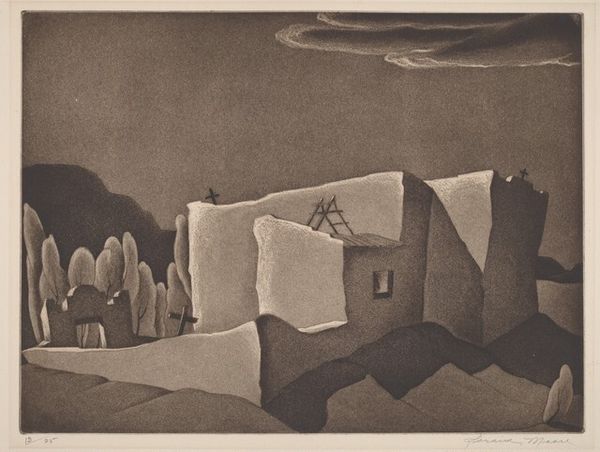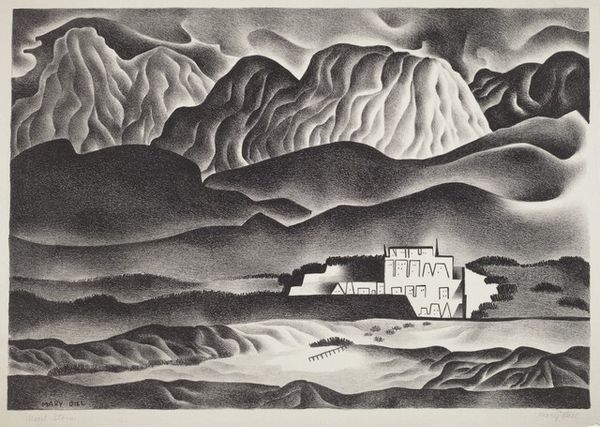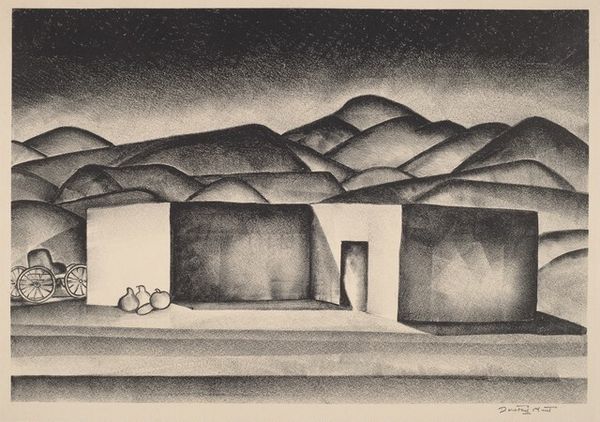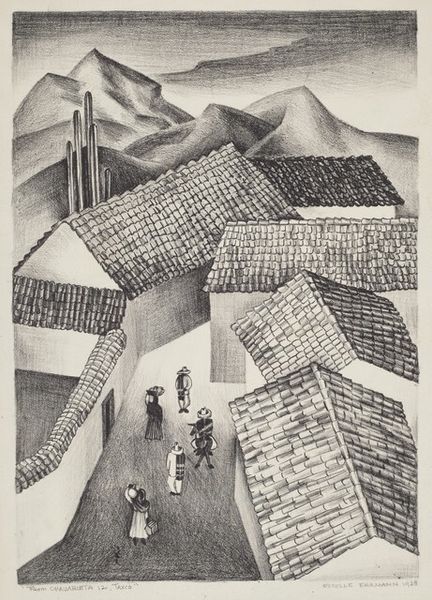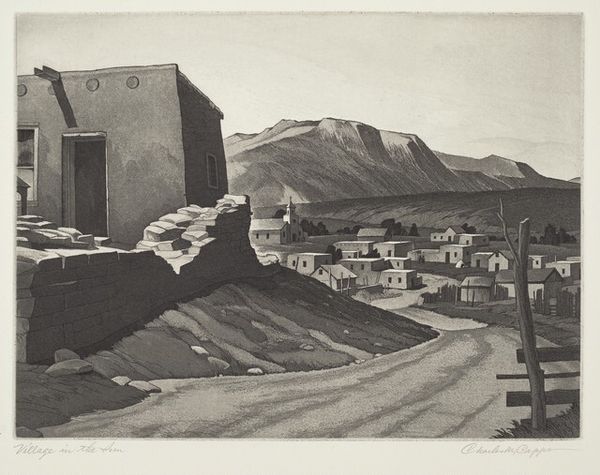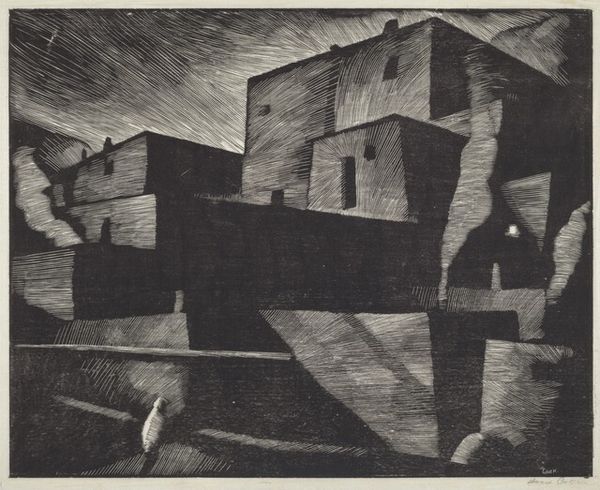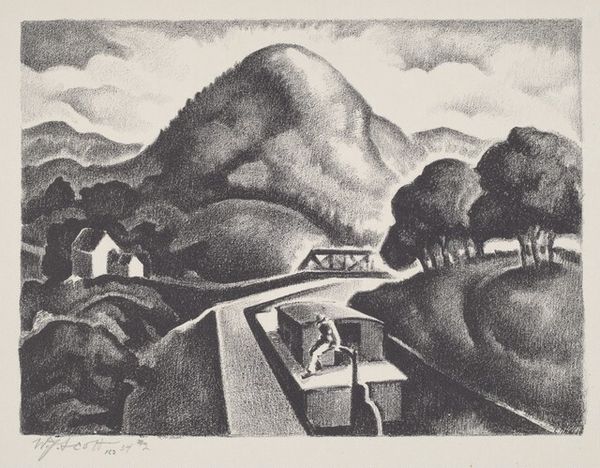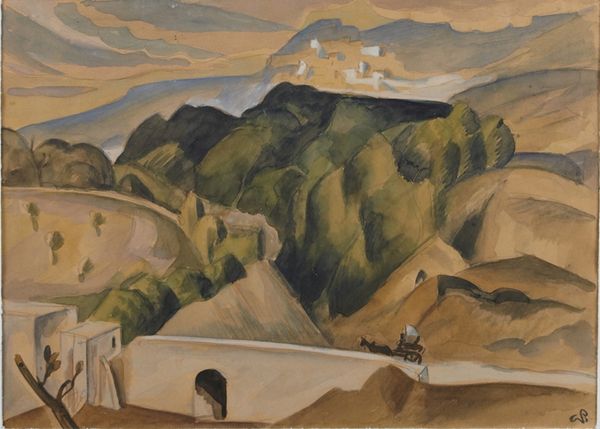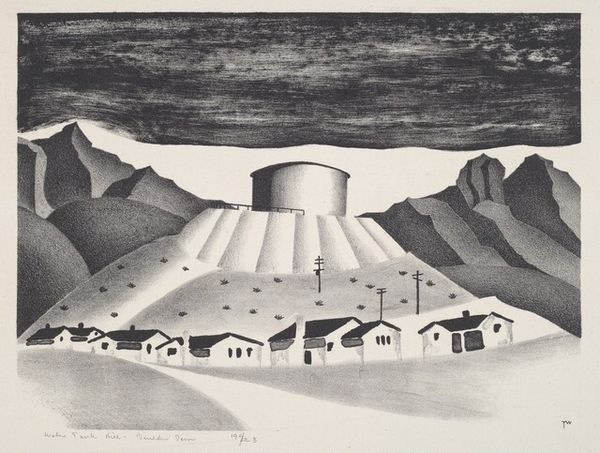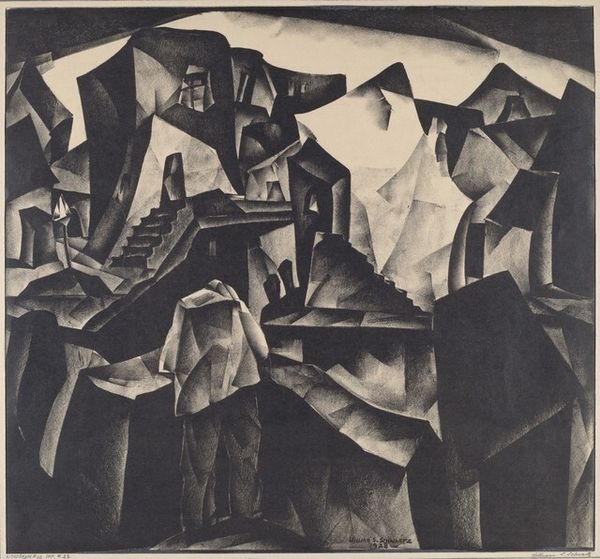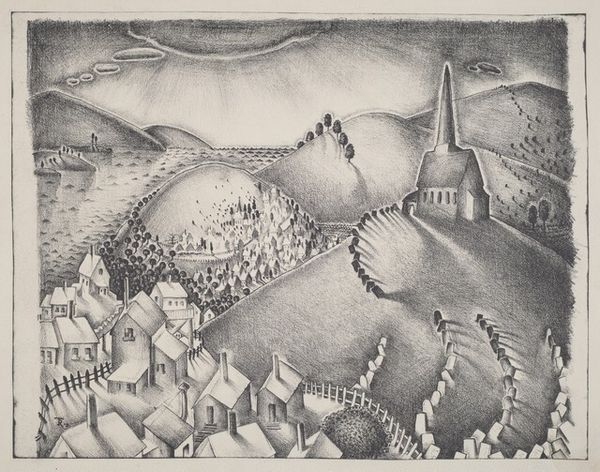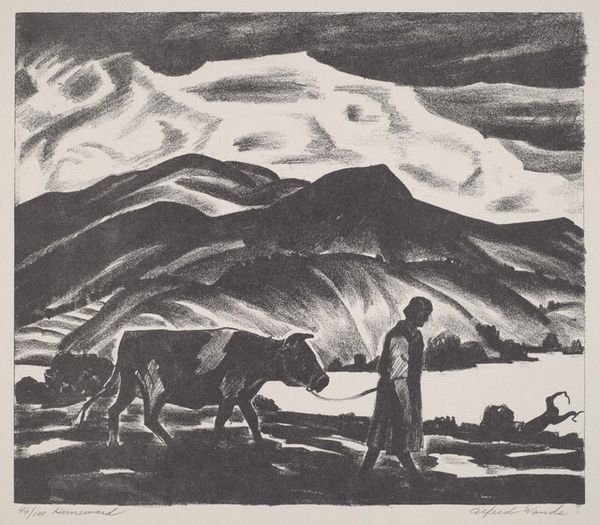
#
pencil drawn
#
light pencil work
#
wedding photograph
# print
#
pencil sketch
#
charcoal drawing
#
pencil drawing
#
framed image
#
surrealism
#
pencil work
#
graphite
Dimensions: image: 22.5 × 28.7 cm (8 7/8 × 11 5/16 in.) sheet: 29.4 × 39.1 cm (11 9/16 × 15 3/8 in.)
Copyright: National Gallery of Art: CC0 1.0
Curator: Here we have Richard Day’s "Mexican Landscape No. 2," a print created in 1933 using graphite. Editor: The mood strikes me immediately as somewhat austere. There’s a dreamlike quality too, almost surreal, in how the light falls and the composition simplifies forms. Curator: Notice the stark geometry that defines the architecture and the rolling hills. Day employs precise lines and subtle gradations of tone to create depth and volume. Semiotically speaking, there's an interesting tension between the organic curves of the landscape and the rigid, almost Cubist, rendering of the buildings. Editor: Precisely! That tension seems quite intentional. The stark white buildings, prominently featured atop the hills, hold a place of honor. Perhaps they signify not only physical elevation, but also a spiritual or cultural prominence in Mexican life and the colonial legacy. They radiate an aura of imposing historical authority. Curator: Yes, consider the contrast. The artist’s implementation of light and shadow heightens that drama. The foreground village appears grounded and practical in contrast with the more ethereal treatment of the hilltop construction. The artist masterfully organizes space to frame the structure. Editor: Visually, the light draws you upwards, compelling the eye to consider the significance of that imposing form above. Given its era, it probably invites dialogue about national identity. Mexicanidad as idealized, perhaps. The buildings represent both a past to grapple with, and present to reclaim. Curator: An astute observation. Further note how the subtle variations in the graphite render a rich tapestry of textures, from the smoothness of the buildings to the more textured undulations of the land. These tactile elements enrich the work, imbuing it with material complexity beyond the representational. Editor: It all coalesces into an introspective gaze at both cultural and spatial identity, and the dream-like quality heightens its reflective atmosphere. It begs you to contemplate its place and historical moment. Curator: A brilliant insight, revealing how Day’s artistic articulation resonates even today, prompting continued re-evaluation of our inherited pasts. Editor: Indeed, the landscape prompts us to look again, recognizing not just the form, but the history etched within.
Comments
No comments
Be the first to comment and join the conversation on the ultimate creative platform.
